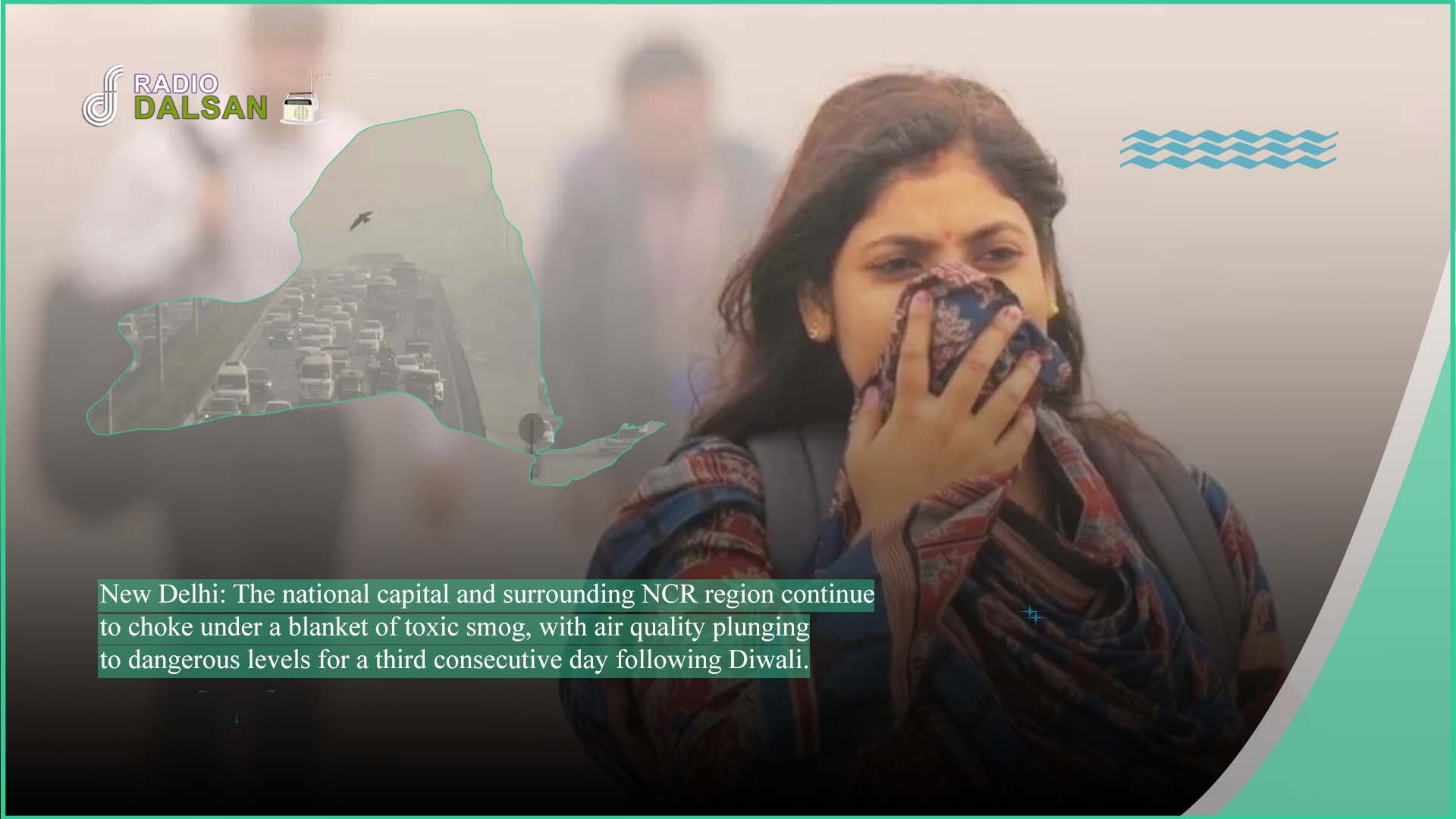Delhi Wrapped in Toxic Smog: Visibility Falls, AQI Reaches ‘Severe’ Levels Across NCR

Delhi Wrapped in Toxic Smog: Visibility Falls, AQI Reaches ‘Severe’ Levels Across NCR
New Delhi: The national capital and surrounding NCR region continue to choke under a blanket of toxic smog, with air quality plunging to dangerous levels for a third consecutive day following Diwali. Dense haze, calm winds, and rising pollution have turned Delhi into what many residents describe as a “gas chamber,” with health experts warning of serious respiratory risks.
Visibility Drops Sharply
Late Saturday night and early Sunday morning, visibility dropped dramatically due to thick smog and stagnant air.
-
Safdarjung Airport: ~900 meters visibility
-
IGI Airport (Palam): ~1,300 meters visibility
-
Wind speed fell below 4 km/h, at times becoming completely still — trapping pollutants at ground level.
AQI Crosses Hazardous Mark
Data from the Central Pollution Control Board (CPCB) at 7 AM on Sunday revealed alarming numbers:
Area
AQI Level
Category
Wazirpur
432
Severe
RK Puram
425
Severe
Chandni Chowk
414
Severe
Anand Vihar
392
Very Poor
AIIMS Area
421
Severe
Jahangirpuri
403
Severe
Punjabi Bagh
403
Severe
Burari
412
Severe
Bawana
413
Severe
Mundka
404
Severe
Vivek Vihar
407
Severe
Rohini
415
Severe
Siri Fort
403
Severe
Pusa
404
Severe
Only a few locations such as NSIT Dwarka (254), IHBAS Dilshad Garden (270), and DTU (292) reported comparatively lower — but still unhealthy — levels.
Delhi’s average AQI touched 377, a sharp spike from:
-
233 on Saturday
-
218 on Friday
The sudden jump reflects the rapid build-up of suspended particles, smoke from firecrackers, ongoing stubble burning in Punjab-Haryana, and unfavorable meteorological conditions.
Weather Conditions Worsen the Crisis
According to the India Meteorological Department (IMD):
-
Maximum temperature: ~30.5°C (below seasonal average)
-
Minimum temperature: ~19.4°C (above average)
-
Humidity: ~73%
-
Light fog predicted in coming days
Experts say low temperatures and weak wind currents are likely to keep pollution trapped close to the ground, meaning no major improvement is expected soon.
Health Concerns Rising
Doctors report a surge in respiratory issues — persistent coughs, throat infections, eye irritation, and breathlessness — especially among children and the elderly. Roughly three out of four households in NCR now report someone ill due to toxic air.
Public health advisories recommend:
-
Wearing N95 masks outdoors
-
Avoiding early-morning and late-night exposure
-
Using air purifiers indoors
-
Limiting outdoor physical activity
Government Measures & Public Response
The Delhi government has activated GRAP-II restrictions, including:
-
Curbs on construction activities
-
Enhanced road vacuuming and spraying
-
Appeals to avoid private vehicles
However, residents say the impact remains limited as pollution continues to escalate.
A City Gasping for Breath
With AQI levels surging past 400 in several regions, Delhi faces one of the season’s worst pollution phases. Experts warn that unless wind speeds pick up or rain arrives, pollution will remain trapped, posing a serious threat to public health.
